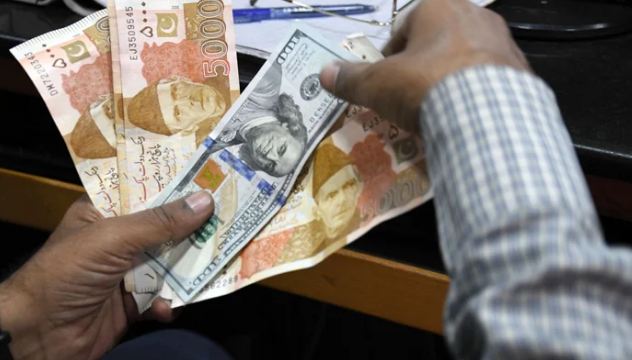KARACHI: As Pakistan reportedly secured financing from China worth $500 million amid a national financial crunch and economic woes, the rupee is expected to gain strength against the dollar in the coming week, The News reported on Sunday.
Similarly, authorities are hopeful to unlock the International Monetary Fund’s (IMF) much-awaited loan programme to cushion its crumbling economic base.
The financial markets of Pakistan witnessed the most turbulent week, enduring a 300 basis point hike in the policy rate, the devaluation of the rupee and a decline in sovereign bonds. Due to a delay in the resumption of Washington-based lender’s assistance, the national currency plunged 6.66% to a record low of 285.09 against the dollar on Thursday in the inter-bank market.
Yet when the central bank announced a larger-than-expected interest rate hike to rein in surging inflation, the local currency rebounded from a record low and finished at 278.46 to the dollar on Friday.
Now the central bank’s policy rate stands at 20%.
Finance Minister Ishaq Dar late on Friday night said Pakistan’s central bank has received $500 million from the Industrial and Commercial Bank of China (ICBC), the first of three disbursements that were approved for rollover.
“Formalities completed and Chinese Bank, ICBC approved rollover of $1.3 billion facility which has been repaid by Pakistan to ICBC in recent months. The facility will be disbursed in 3 instalments; the first one of $500 million has been received by SBP. It will increase forex reserves,” Dar said on his official Twitter handle.
“The release of China’s loan rollover and the emergence of hope that the country would quickly achieve an accord with the IMF to release a bailout imply that the market’s sentiment will improve and the rupee will trade stronger next week,” said a currency dealer.
Moreover, Tresmark said in a weekly note that “the rupee crashed on the back of intervention to weaken the currency, perhaps to meet another IMF condition.”
This time the intervention was done by the central bank briskly buying dollars from the inter-bank market, it said.
“We saw exporters turn up with handsome amounts in the 280-285/$ range. Some analysts are of the view that the central bank mopped up about $150-200mn from the market, which may go to shore up its reserves or to make some strategic payments,” it said.
“Most analysts we spoke to say the 265-275 range is where the rupee will settle [assuming the IMF deal]. However, a minority is of the view, whom we side with, that the range would be about 275-280 as SBP’s dollar buying sprees will be more frequent and intentional, keeping the rupee close to its low,” it added.
With the IMF [hopefully] onboard, the situation would still be challenging, but it would give the leadership more space to unlock bilateral, multilateral and flood-related flows.
However, what started as an external balance of payments crisis has now spread into the fiscal space as well, according to Tresmark.
Pakistan’s interest-to-revenue ratio which was the worst in the region (just behind Sri Lanka) at 42% will balloon up to 54%. This means interest rate payments will rise from Rs.4 trillion to Rs5.4 trillion, crowding out other growth and developmental areas.

















